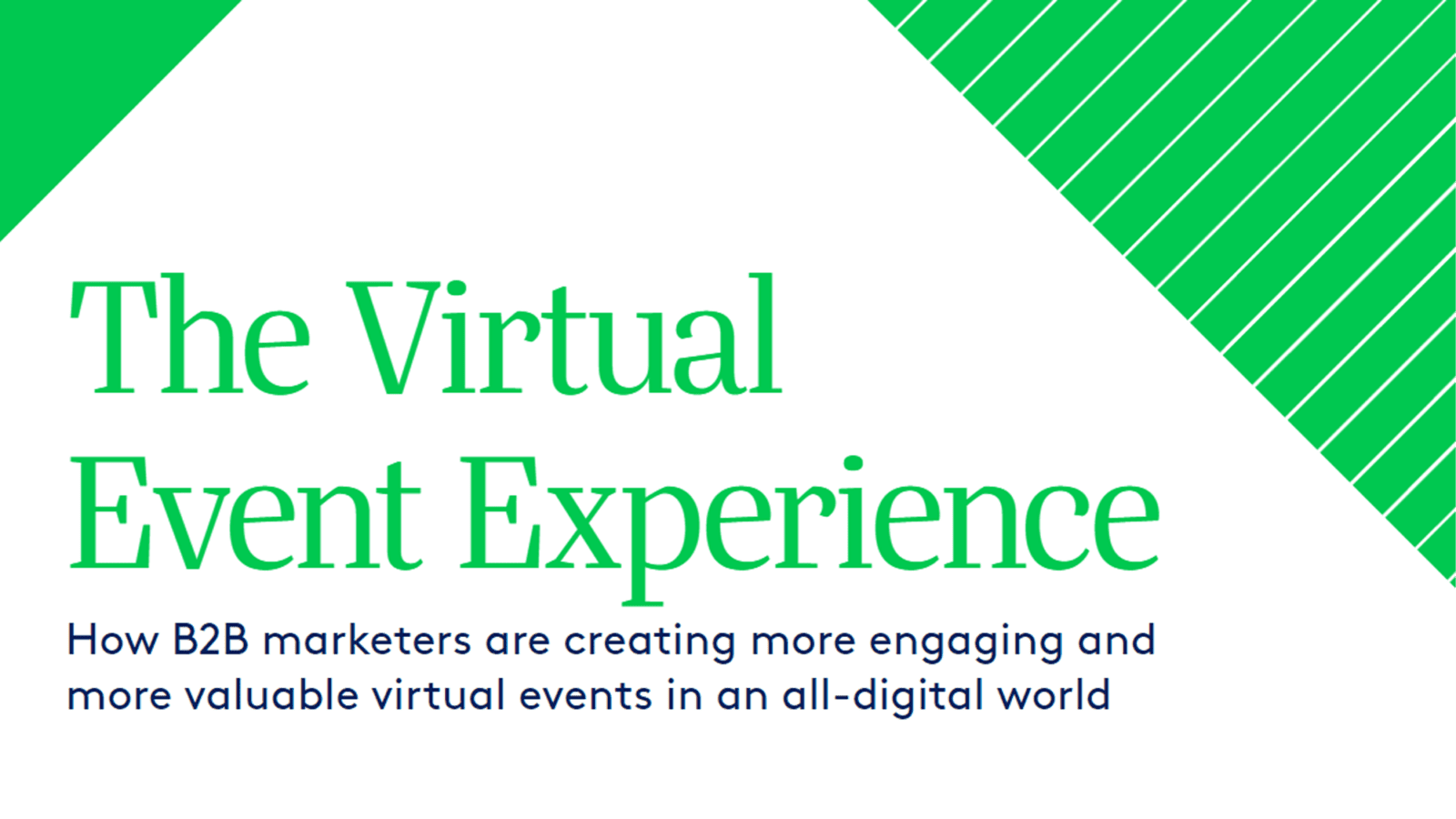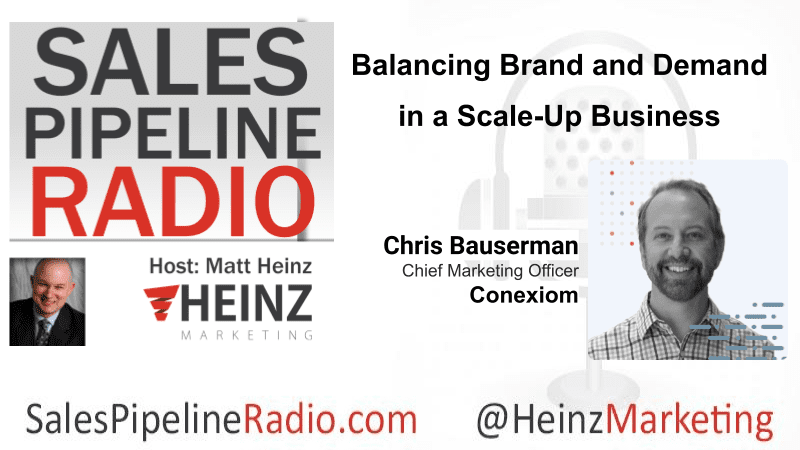How to Master the Virtual Event Experience

By Josh Baez, Client Engagement Manager at Heinz Marketing
What is the virtual event experience?
With the growing adoption of virtual events in our digital-first world, it’s become more critical than ever to separate yourself from the pack. And in the face of the COVID-19 pandemic forcing businesses to close and employees to work remotely, engaging face-to-face is simply no longer an option.
The focus on and importance of virtual events is at its strongest in years. Nearly 9 in 10 B2B professionals have increased the number of virtual events that their organization either hosts or is a part of has increased in the last 90 days. And savvy organizations will continue to take advantage of these new opportunities to get ahead—and stay ahead—not only of the virtual event curve, but their competition as well.
Experience drives demand. And for B2B marketing and sales teams to emerge as leaders in this increasingly saturated virtual event space—especially against the traditional event planner—they must ensure their ability to truly engage and delight today’s audiences, while also removing friction from their buyers’ journeys.
Now, and moving forward, it’s critical for companies to nurture buyers and educate customers before, during, and after every virtual event to accelerate the journey, build loyalty, and drive rich engagement at every stage.
This new research from PathFactory and Heinz Marketing uncovers the foundations of today’s virtual event experiences, deconstructing the entire virtual event lifecycle to identify trends, challenges, and opportunities for organizations to learn from, develop, and implement throughout their own virtual event programs.
The virtualization of events is only just beginning—how will you lead the pack?
To check out the full report, click here! Otherwise, keep scrolling to continue reading 👇
Our hypothesis
If B2B sellers and marketers could more effectively maximize engagement across the full lifecycle of a virtual event—pre-, during, and post-event—then their organizations would be able to generate more qualified leads, provide better holistic experiences, and create more loyal customers from key target accounts.
To test our hypothesis, and to better understand the B2B virtual event experience, PathFactory and Heinz Marketing conducted a survey in May 2020. The following data comes from 200 B2B professionals across multiple experience levels, company sizes, and industries.
The virtual event lifecycle
Before we dig into our findings, let’s do a quick recap of the virtual event lifecycle. There are 3 phases of a virtual event you have to consider for your plan. These are the:
Pre-event
How will your audiences know about your event? That’s the primary focus of the pre-event. Ensuring you’re equipped with the right message, the right audience, and the right channels to not only reach the right people but to also provide them a compelling enough reason to register.
In-event
It’s the day of your virtual event, your audiences are logged in, and the show’s about to begin—are you ready? It’s about more than selecting the right virtual event software. When it comes to in-event tactics, it’s all around maximizing engagement with your audience. How do you keep their attention? How do you make the most of your time with them? How do you accelerate their buying journeys and improve advocacy? These are the questions to consider for the event itself.
Post-Event
While the event itself may be over, the experience of your attendees is far from it. In the post-event, your focus should be around utilizing what you know about your attendees to serve them relevant, timely, and personalized content experiences that continue the conversations from the event. What did they interact with? What did they respond to? What questions did they ask?
Keeping these 3 phases of your virtual event top of mind as you develop your plan is crucial in ensuring your registrants and attendees have a positive, well-rounded, and meaningful experience that, at the same time, gives them a reason to come to the next one.
Key findings
1. Audiences crave participation and interaction above all else.
67% of virtual event attendees report having opportunities to participate and interact with the speakers and other attendees makes them more inclined to stay, listen, and engage. Activities like live Q&As, chat consoles, quizzes and polls, and other means of facilitating audience involvement are all examples of ways to get your audience involved. It’s really about making them feel like they’re a part of the event, rather than a nonexistent fly on the wall.
Virtual booths aren’t worth it
Meanwhile, only 9% of respondents report having virtual booths as a part of an event actually keeps them engaged. Which is probably a good thing…
The rules and logistics of virtual booths are precarious at best and are already in great need of refinement. When so few people actually visit these booths, you’ve got to wonder why you should bother with them in the first place.
Instead of spending time (and hours of headaches) attempting to build a virtual tradeshow floor, put your resources into giving the audience more ways to interact and engage with the virtual events they’re already a part of.
2. Pre-event effectiveness is an uphill battle.
Only 27.2% of respondents report they are effective at generating registrations and attendees for a virtual event. And even organizations with over 75% attendance rates seem to struggle: only 18% of these respondents believe their company implements pre-event tactics effectively.
The biggest challenges cited included working against short time frames (59%), under-performing emails and ads (44%), the inability to reach the right audience (38%), and lacking the right data to effectively measure engagement pre-event (31%).
A lack of audience insights prevents better pre-event outcomes
While a lack of pre-event data was only cited as a challenge for 31% of respondents, we believe this gap is what’s impeding better virtual event results.
Data may not be a top challenge, but it certainly has the potential to impact your entire event lifecycle. Because to cut through the noise, pre-event materials must be relevant to your audience. They must take into account their needs, interests, goals, and challenges. They should consider where they’ve been and what they’ve already interacted with. Otherwise, your promotions may as well fall on deaf ears.
Unfortunately, the research suggests an overall lack of audience insights may be what’s truly impeding organizations the most in their pre-event efforts. Insights like:
- Which destinations keep visitors engaged the longest
- Which destinations convert visitors to registrants most effectively
- Which channels are driving the best outcomes
- Which emails and ads are performing the best and why
- Which topics and value propositions are most engaging and resonant with audiences
While only 31% of respondents identified their lack of data as a challenge, the truth is data impacts everything. Under performing promotions, the inability to reach the right audiences, and a lack of consistent messaging are all outcomes of having poor or underutilized audience insights to influence respondents’ pre-event tactics.
If you’re to improve your pre-event outcomes, ensuring you have the right data to justify your decisions and tactics should be your first area of focus.
3. Driving attendance is a challenge for most.
If you think you’re alone in your attendance woes, you’re not. Only 7.5% of respondents report that they see a typical attendance rate of more than 75% for their virtual events. And only 39% say they can exceed 50%.
Even when attendees are present, lacking audience participation, missing the typical human interactions associated with in-person events, and mid-event drop-off are challenges that even the best companies are still working to overcome.
The solution? Refer to Key Finding 1 and give the people what they want! Interactivity keeps audiences engaged and present at virtual events.
4. Post-event tactics are just as tricky.
Just as the pre-event and in-event stages have their roadblocks, post-event tactics prove just as challenging. Only 18% of respondents are effective at continuing to generate engagement post-event.
While producing on-demand recordings, launching event-specific nurture flows, and creating repurposed content from the virtual event are all being done, these tactics don’t seem to drive the kind of meaningful engagement with attendees that organizations hope for.
A lack of attendee data lessens the effectiveness of post-event tactics
We see a similar data challenge here. Because not knowing what content or topics individual attendees engaged with most at the event is the number one challenge for organizations of all attendance rates.
Lacking the data to know what resonated the most with individuals throughout an event can have significant impacts after the event is over. How do you know what content to send or what message to use? Suddenly, there’s a lot of uncertainty following the success of an event. And without the data to know what went wrong, what could be improved, and how to best follow-up with attendees to maximize engagement, it’s all too easy for ROI to be lost in the shuffle.
This lack of meaningful attendee data hinders virtual event experiences
Without the right data on their audiences—or their audience’s journey through the event lifecycle—it’s no wonder respondents feel their virtual event efforts are going to waste. Because in order to drive meaningful engagement and provide rich, relevant user experiences, B2B sellers and marketers rely on this data to enhance the work they do.
The need for personalization and interaction are high priorities for today’s audiences. And to truly reap the rewards of a virtual event program, organizations must deliver both in spades. But in order to deliver, they require the right data to make it happen.
Data is tricky, especially when you’re measuring it live during a virtual event. And without it, it’s hard to accurately measure and report on the ROI generated by your virtual event. But ensuring you’re tracking (and you’re even able to track) the right metrics in the first place can be just as challenging.
The data challenge isn’t one that can be solved overnight, but being aware of these gaps is the first step in being able to bridge them.
Where do we go from here?
To find success in your virtual event experiences, content must prioritize interaction, seamless engagement, relevant subject matter, and rich user experiences throughout the entirety of the event lifecycle: before, during, and after.
However, as we’ve seen, without the right data to fuel these experiences, success becomes harder to achieve. And it’s, perhaps, the data that separates the best-in-class companies from the rest of the pack.
With the right data, a company can emerge as a leader in their virtual event experiences. They can more strategically and intentionally provide relevant recommendations to their attendees based on individual behaviors. They can paint a more accurate picture of who attendees are, their interests, and their intent. They can more thoughtfully engage their audiences before, during, and after an event to continue conversations and accelerate journeys.
And with the right data in hand, organizations can ensure their virtual events drive outcomes like accelerating demand generation, increasing deal velocity, and improving win rates while simultaneously positioning the user experience at the forefront.
For you to master the virtual event experience, you and your team must deliver more: more intelligence, more interaction, more insight, more highly-personalized experiences through a variety of media and applications. Otherwise, attendees risk falling through the gaps as you risk falling behind.
There’s even more to unpack in our full research report. Click here to check it out and take the next step in mastering the virtual event experience!




